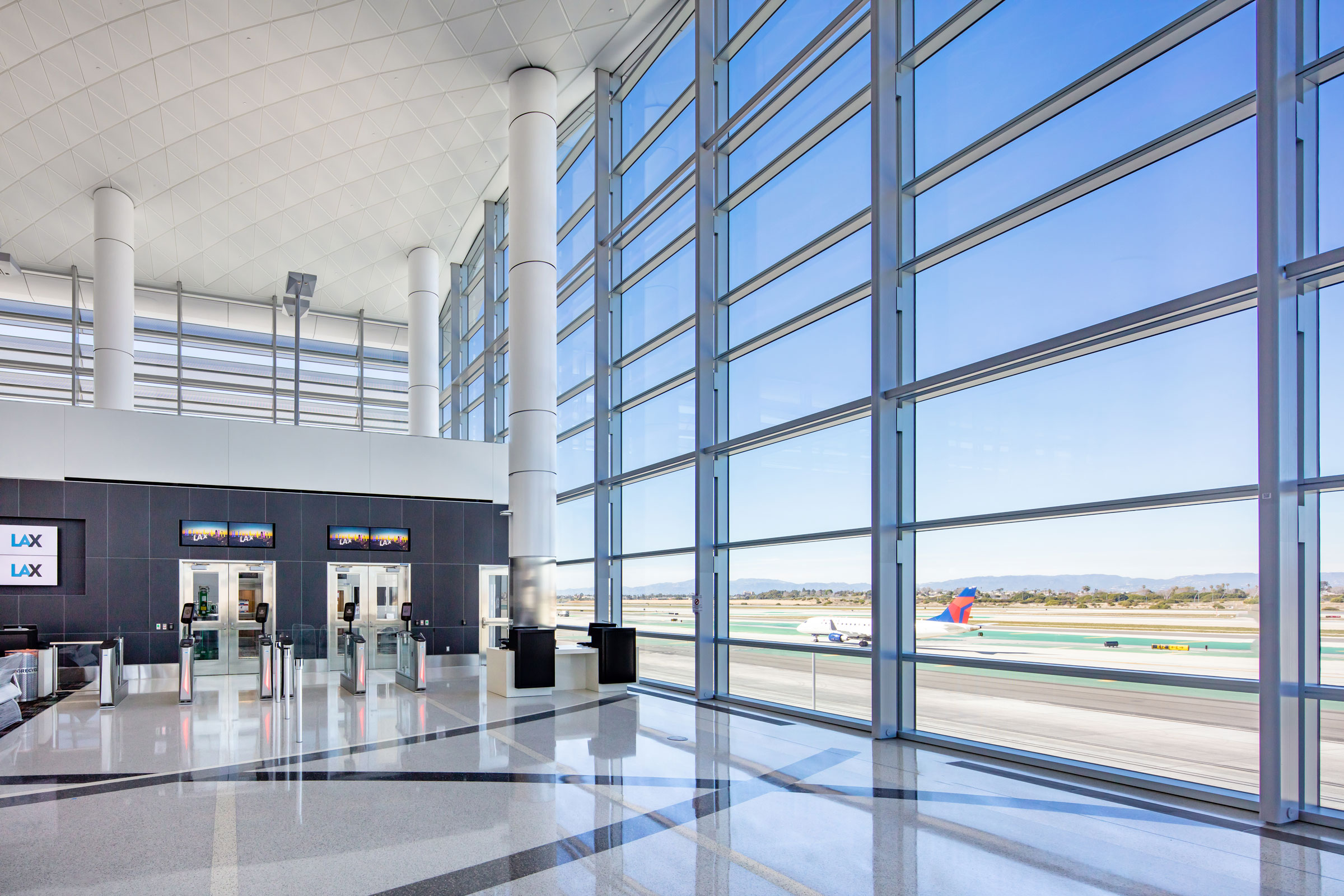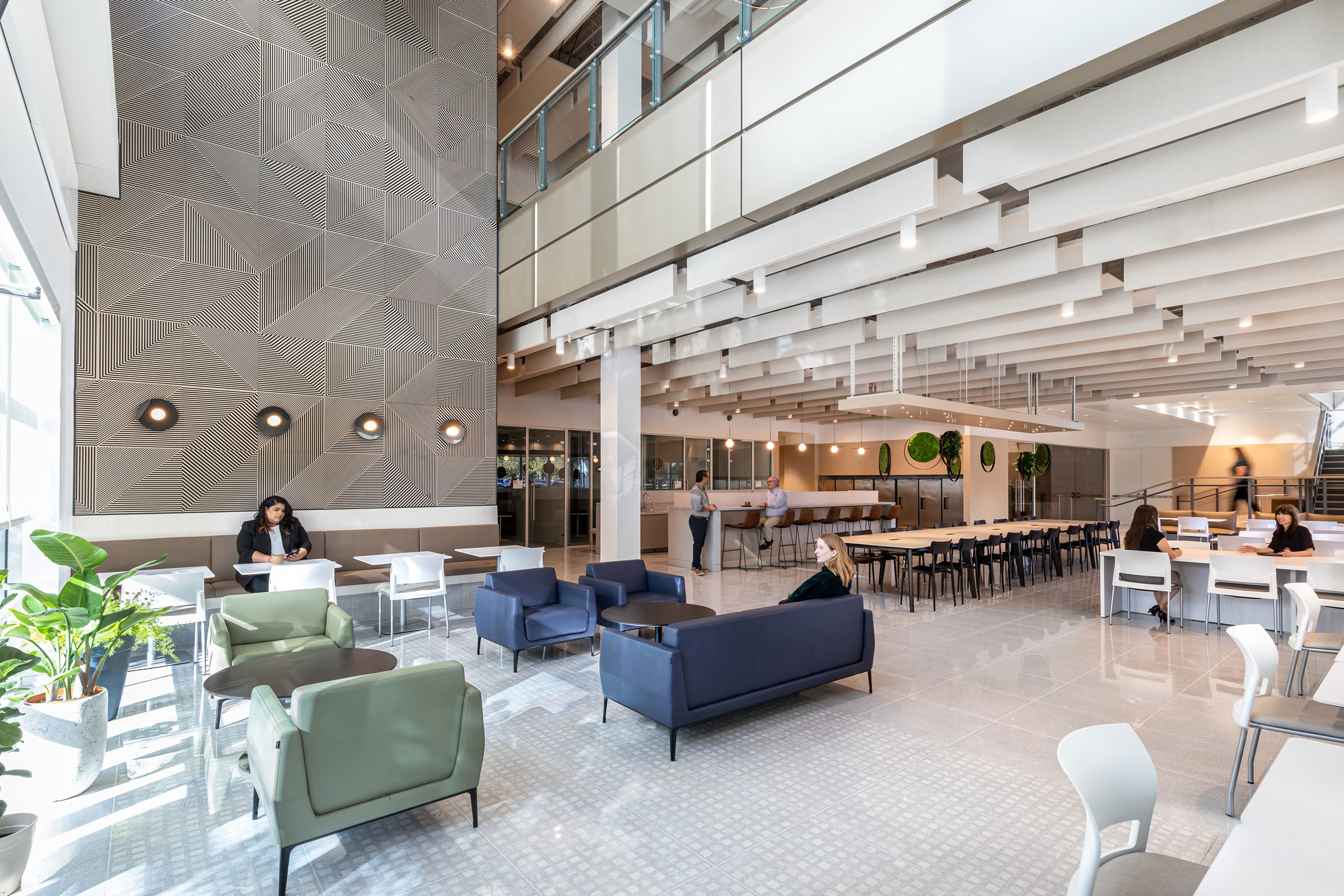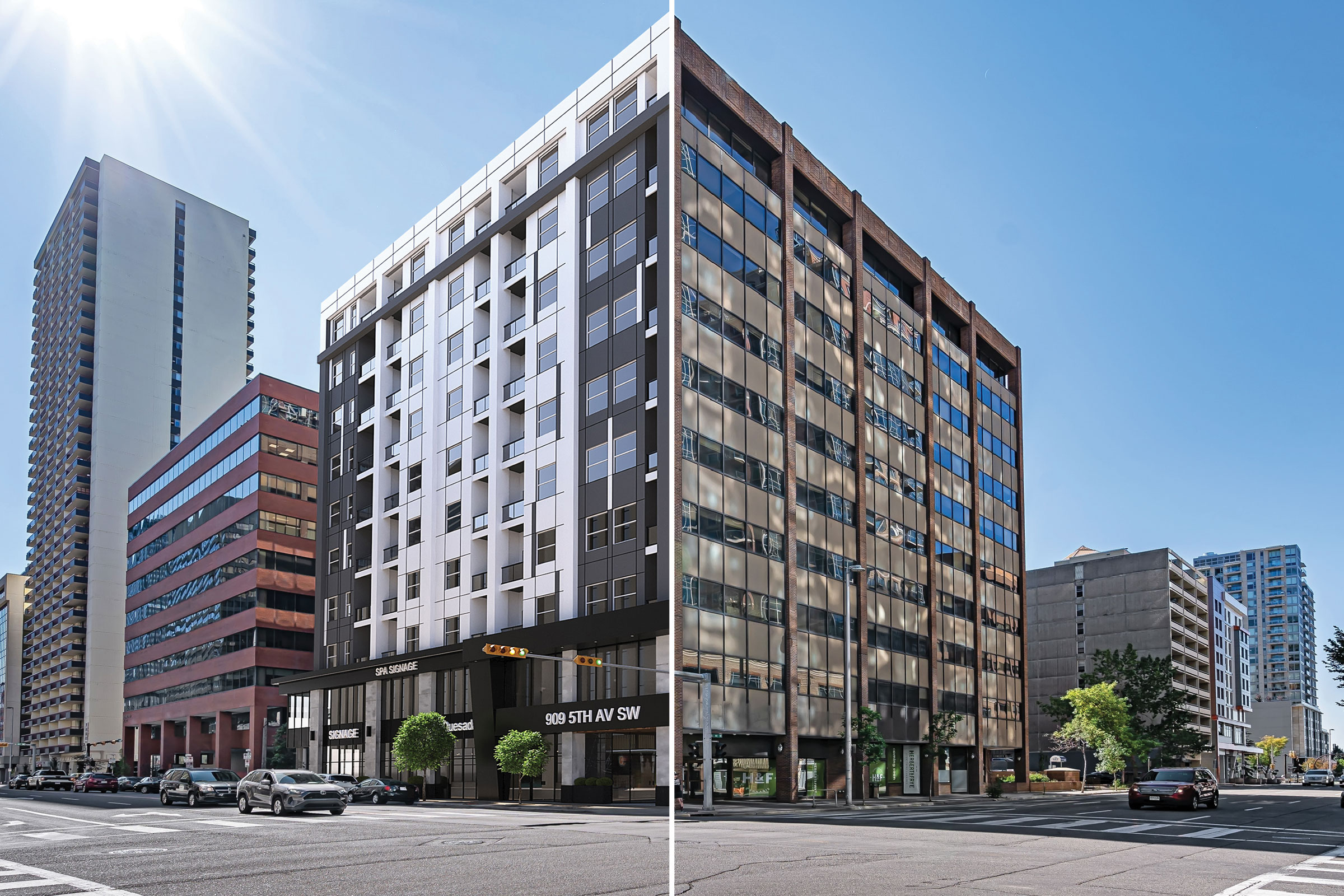Story at a glance:
- Leaders at LAX say future terminals will be designed to incorporate calming elements.
- Post-Covid design strategies could include “cleanliness theaters” so passengers can see sanitation in process.
- The future of airport design is also expected to emphasize ample natural light, public art, and a natural color palette.
As people take to the skies in some of the highest numbers we’ve seen in recent months, the team at gb&d talked to Los Angeles World Airports about the changing nature of airport design, and LAX’s own current and upcoming projects.
We interviewed Bernardo Gogna, chief development officer at Los Angeles World Airports, to find out more about sustainable airport design.
How will airport design change post-Covid?
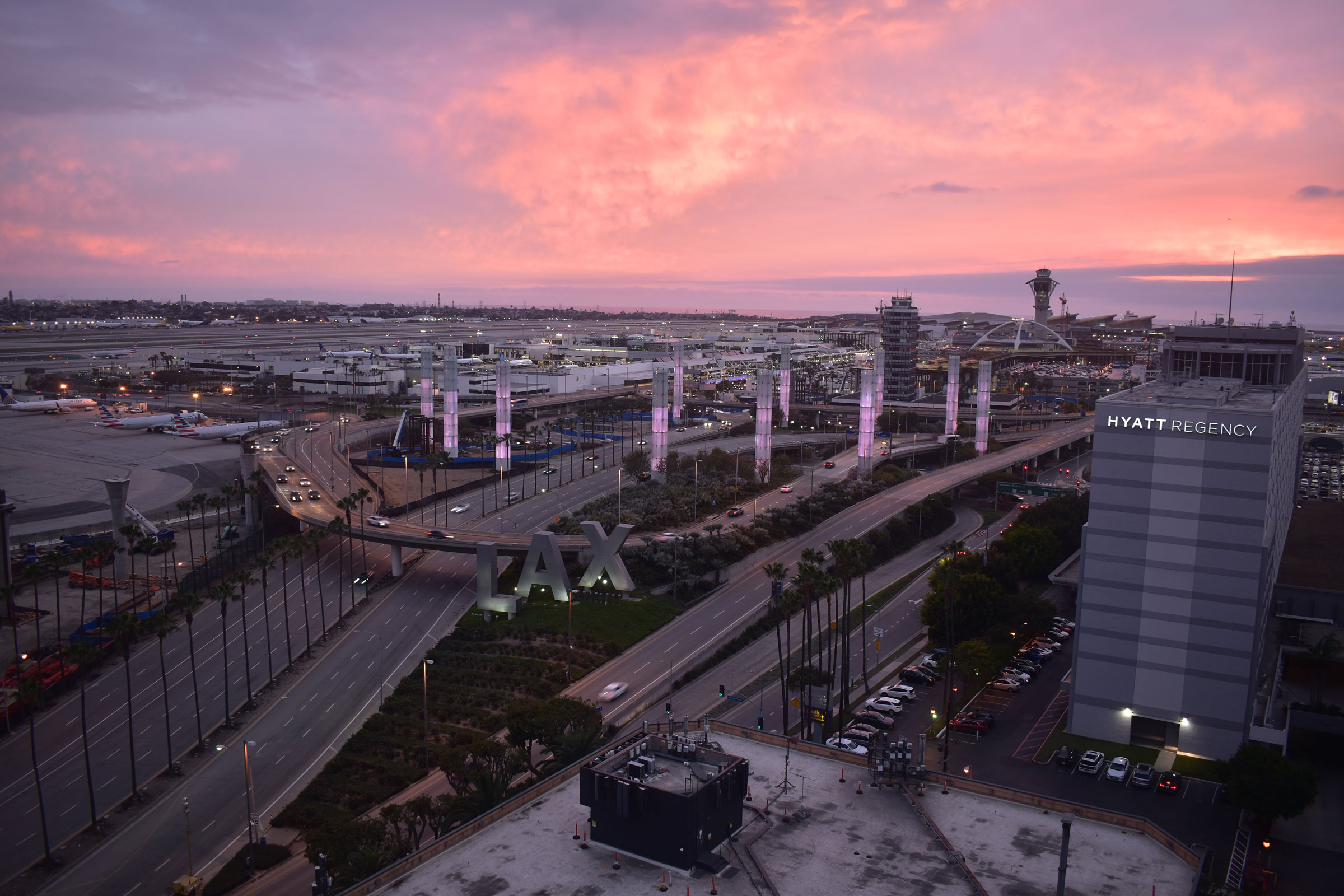
Outside LAX. Photo courtesy of Los Angeles World Airports
Airport design will need to support the overall goal of restoring passenger confidence in air travel. A focus on passenger health and wellness will play an important part in that. With current social distancing requirements, airports are learning that flexible space programming allows for quick response to dynamic situations like public health crises. We may see passenger processing functions moving further upstream so that check-in and ticketing functions don’t necessarily happen inside the terminal building, freeing up space for more flexibility.
Cleanliness is becoming a point of focus as well. There is a concept of “cleanliness theater” that showcases to the public all of the ways that airports are keeping their facilities clean and sanitary. In future facility designs it will be important to demonstrate cleanliness through janitorial regiments and thoughtful selection of building materials.
As people return to air travel they will be looking for choices throughout their airport journey—the freedom to choose how they check in, where they dwell at the gate, and how they shop or order food.
How is LAX enacting safe, modern airport design?
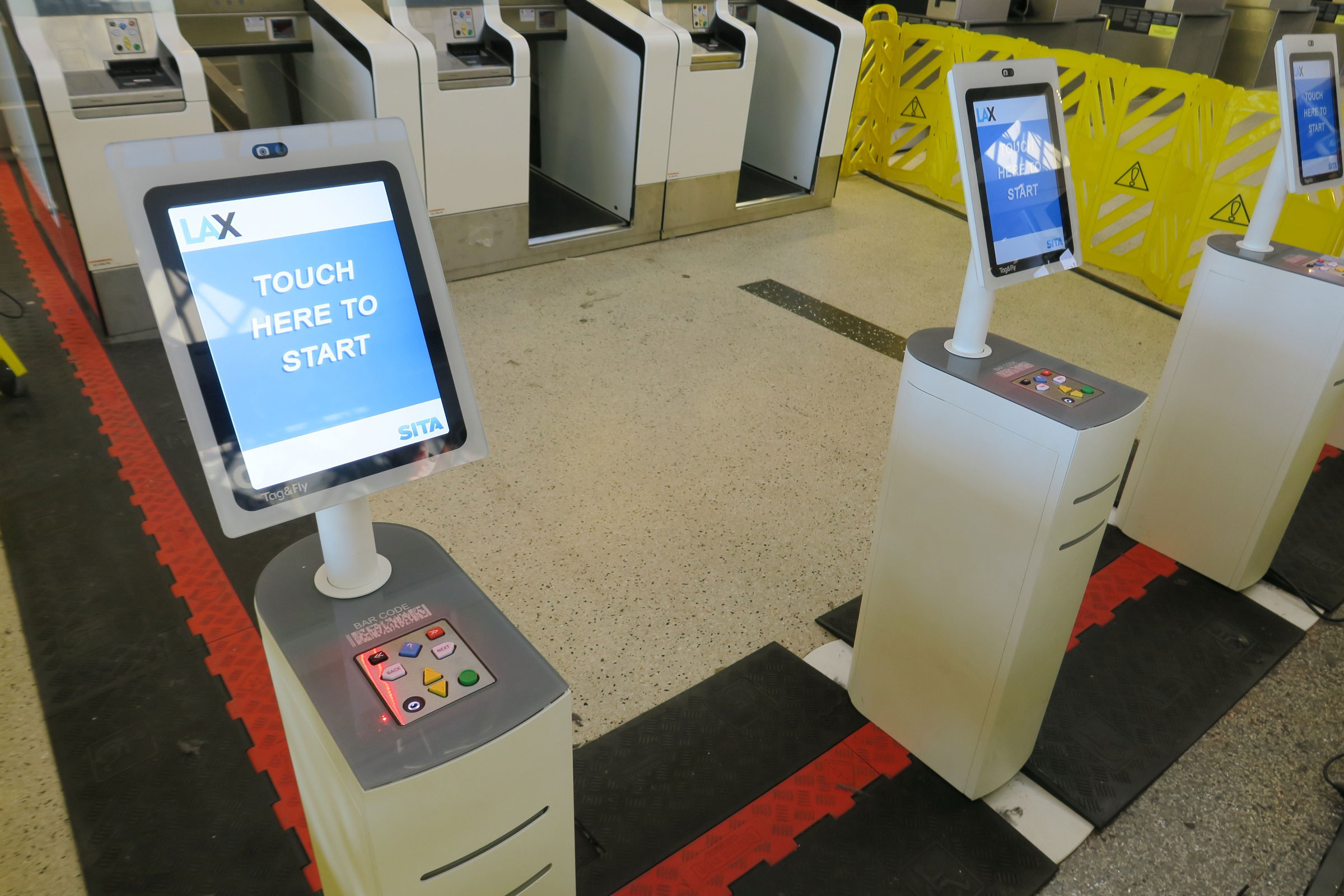
Common bag drop at LAX. Photo courtesy of Los Angeles World Airports
Throughout the past year LAX has been using technology to enable a more touchless passenger journey from curb to gate. Some examples include self-service document checkers, remote control technology at check-in kiosks, automated water bottle filling stations, and motion-sensing restroom faucets and soap dispensers.
The global pandemic has had a major impact on commercial air travel, but it has also created an opportunity for major construction projects to proceed with fewer operational constraints. Terminal redevelopment projects continued through 2020 despite the pandemic. The Terminal 2/3 modernization project was accelerated by completely closing Terminal 3, which allowed for demolition work to commence ahead of schedule. Construction of the Automated People Mover train guideway, Consolidated Rent-A-Car facility, and other landside facilities have continued over the past year. Once completed, these landside facilities will offer passengers greater choice and flexibility in how they access the terminals.
Does LAX have current plans to change its interior design?
In the era of Covid it will be important to design terminal interiors to be passenger-centric, meaning the layout and functionality of space serves the needs of the traveling passenger. The passenger is looking for flexibility and reassurance.
Learning from airports’ response to Covid, future terminals will be designed to incorporate calming elements, such as ample natural light, public art, and a natural color palette. Passenger choice will be reflected in furniture variety throughout the hold rooms, dining areas, children’s play areas, and other dwell areas.
In an effort to reduce surface contact, physical touch points will be minimized through use of technologies such as remote passenger processing (e.g., mobile check-in). As more processes occur outside of the terminal building, interior space can be programmed with greater flexibility.
Tell us more about the 2017 LAX design vision.
The 2017 LAX Design Guidelines establish a comprehensive vision for the passenger experience at LAX by integrating the design of new and existing facilities in and around the Central Terminal Area. The guidelines aim to honor the airport’s history and mid-century modern architecture while providing design guidance for new construction and major renovations as part of the ongoing modernization of LAX.
The goal of the design guidelines is to create a unified airport campus by establishing design direction for the new elements at LAX that will create a more positive user experience, a more functional airport and a more integrated LAX.
Strategies of the design guidelines are aimed at unifying the airport and enhancing the user experience by creating a more integrated campus by creating complementary relationships between new and existing LAX elements; employing a high degree of transparency in the new LAX elements to optimize views, safety and reduce visual clutter; complementing, but not mimicking, existing LAX architectural icons; using simple repetitive elements in the design of the new LAX elements; and meeting all functional, operational and maintenance criteria in the design of new LAX elements.
How do you ensure passenger safety while employing inspiring design?
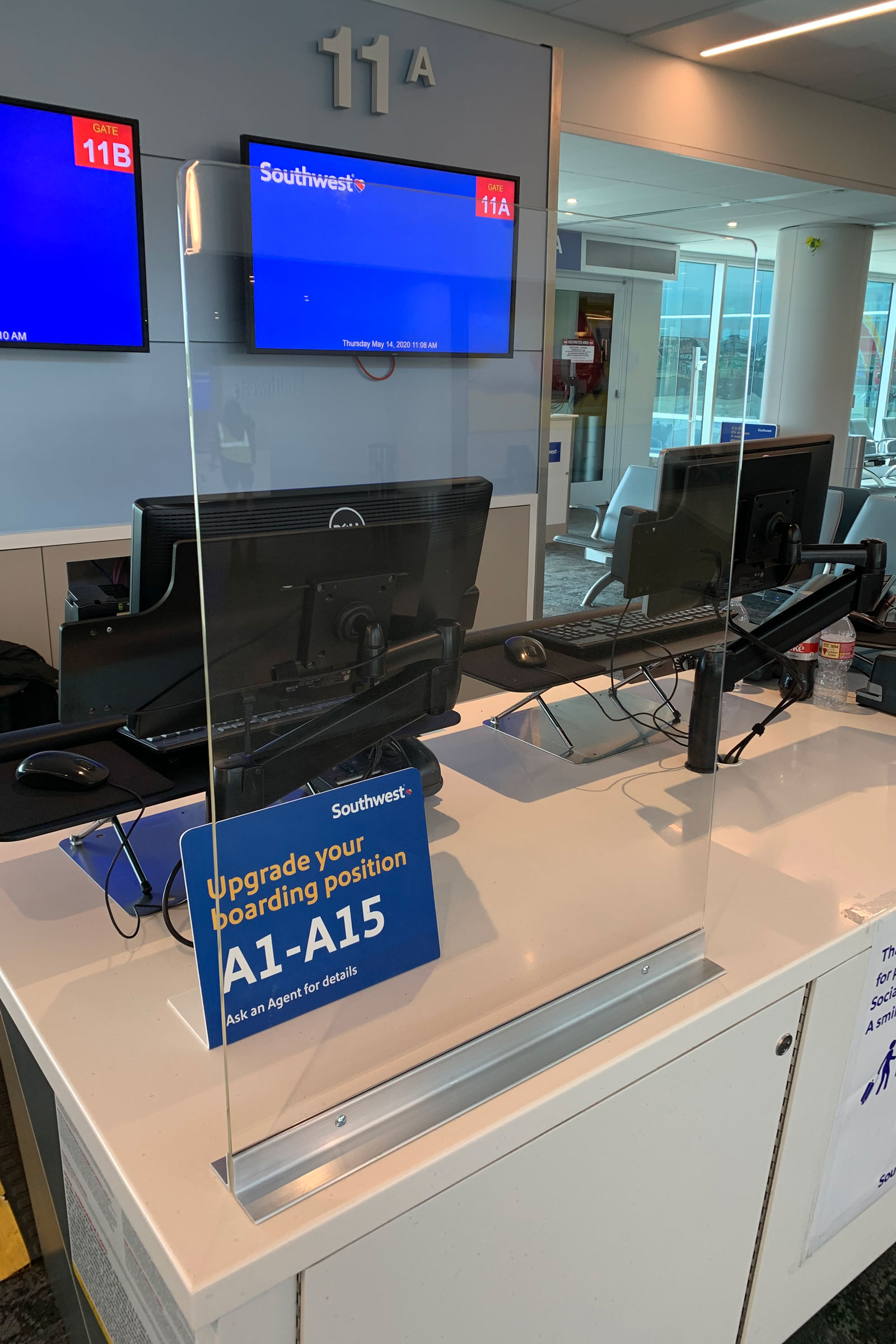
Plexiglass barricades went up at LAX early in the 2020 pandemic. Photo courtesy of Los Angeles World Airports
Passenger safety and quality design do not have to be incompatible. In fact, the best terminal designs will accommodate passenger needs, including health, safety, and security, in a natural and unobtrusive way.
The use of clear sightlines within terminal spaces creates a more intuitive experience for passengers where they can feel they have more control and predictability in each step of their journey.
Mechanical systems in the terminals already hold to a high standard of air filtration and air change rate, allowing for effective viral containment at the system level. These standards will be carried forward into new facilities.
Designs that will help in passenger processing efficiency are inherently safer since they reduce congestion and dwell time.
How important are the actual materials in an airport?
Material selection has always been an important element of terminal design, not only from a design standpoint, but from a maintenance and passenger experience standpoint as well.
Materials are evaluated and selected based on a number of factors, including availability, durability, sustainability, and cost. Going forward we may see an industry preference toward materials that are seen as “sanitary”—those that can be visibly inspected for cleanliness and wiped down to a shine. New sanitization methods, such as UV-C ultraviolet spectrum lighting, and innovative material surfaces, such as nano-septic materials, may become more common in the airport environment.
How do you promote safe travel through design?
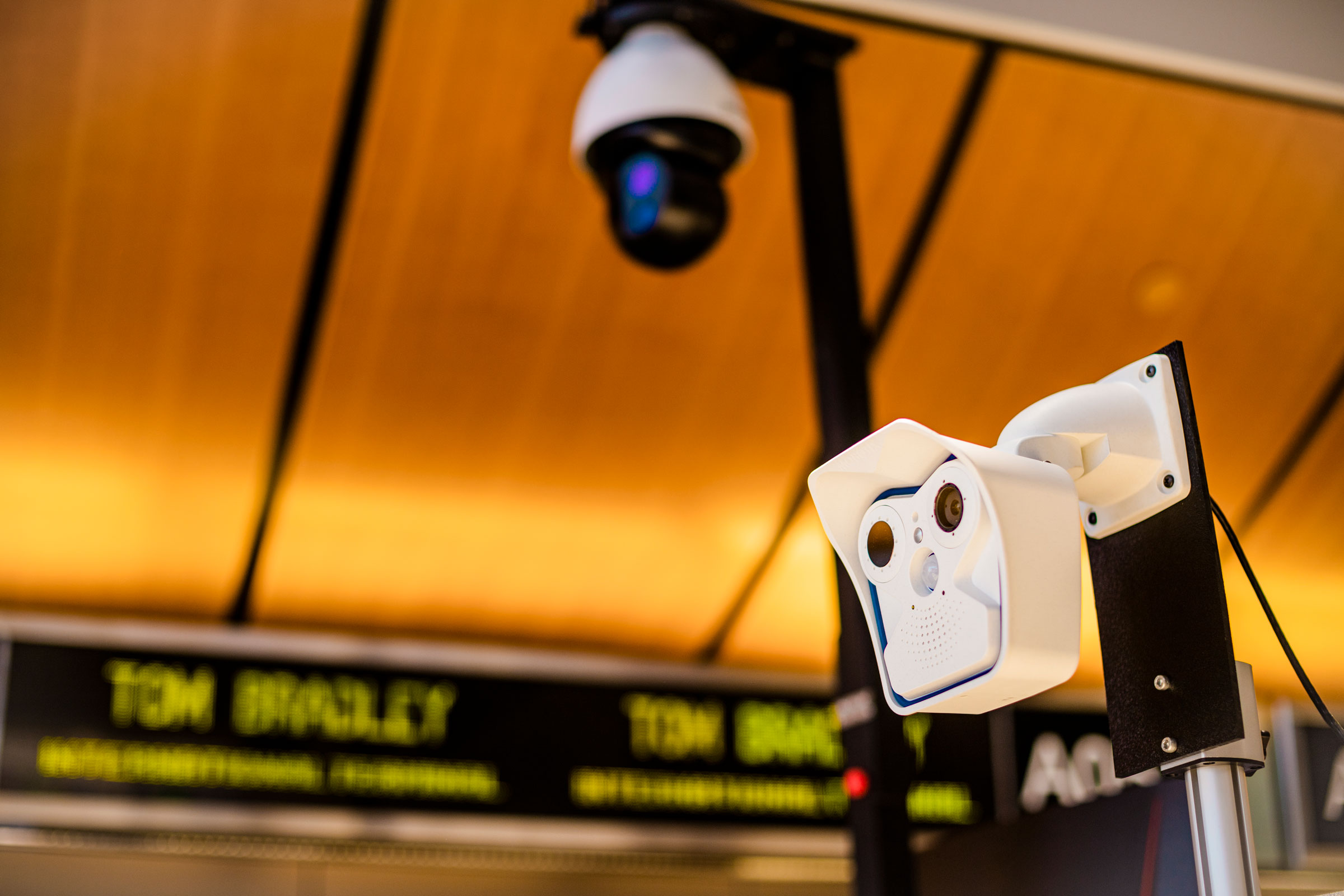
Thermal imaging pilot at LAX. Photo courtesy of Los Angeles World Airports
Safe travel is first accomplished by putting the traveling passenger at ease. Any design or architectural intervention should reinforce the perception of openness, flexibility, and cleanliness.
Public communication and messaging play a key role in preparing travelers for the airport journey. LAX maintains a Travel Safely webpage that summarizes the procedures and initiatives in place to ensure a clean, safe, and healthy airport journey.

